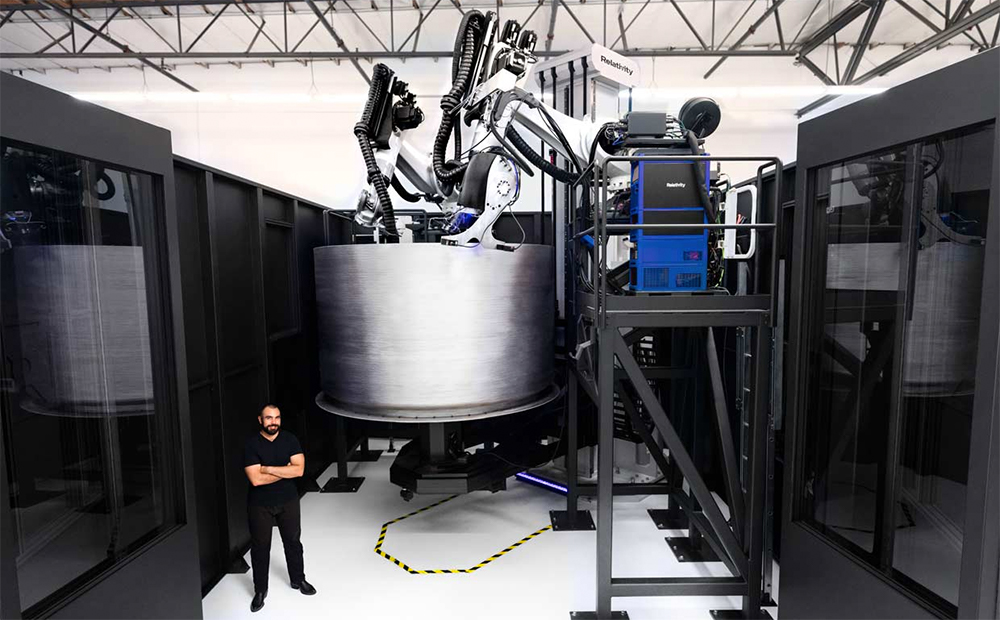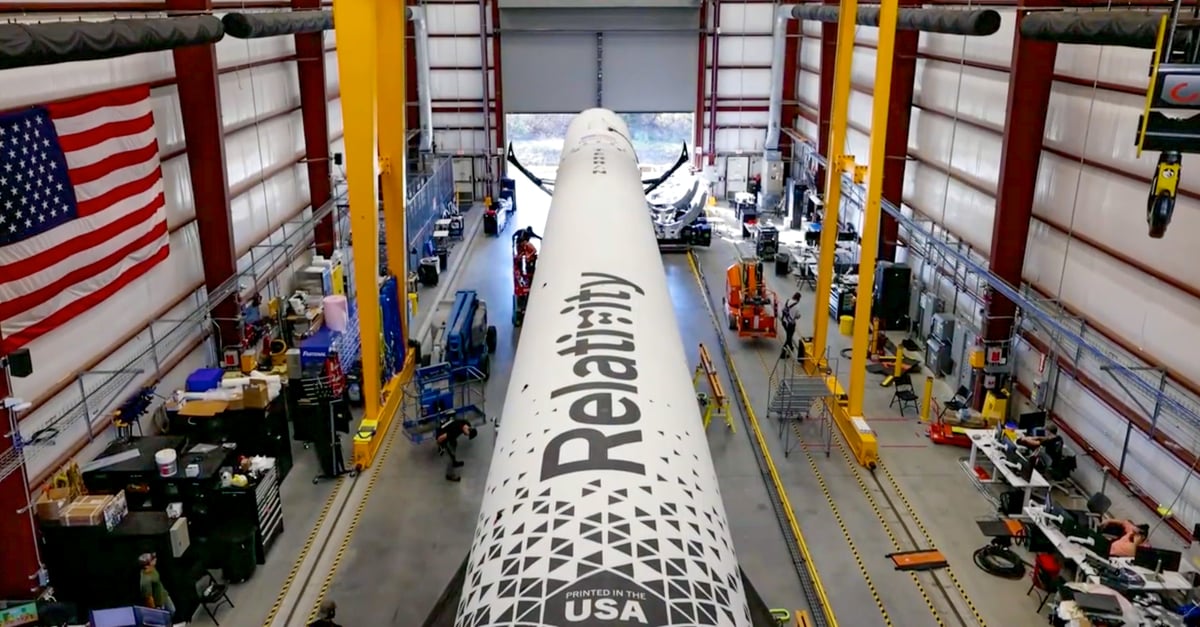Terran 1, the largest 3D printed object to launch, lifted off from the Cape Canaveral Space Force Station in Florida on March 22, marking a historic milestone for additive manufacturing in aerospace. The 33-meter (110-foot) tall rocket and its nine engines are all 3D printed by aerospace start-up Relativity Space, in its Long Beach, Calif., factory.
Dubbed “GLHF” (Good Luck, Have Fun), the rocket that took off from Launch Complex 16 (LC-16) was the company’s third attempt at launch and did not include a customer payload.
Unfortunately, after a successful launch, the rocket failed to make orbit because of an upper-stage malfunction. Still, the company says the “launch proved Relativity’s 3D printed rocket technologies” because it made it through Max-Q, the highest stress state during a launch. “This is the biggest proof point for our novel additive manufacturing approach,” the company posted on Twitter. “Today is a huge win, with many historic firsts. We also progressed through Main Engine Cutoff and Stage Separation. We will assess flight data and provide public updates over the coming days.”
Relativity Space is the first venture-back space company to attempt orbit on its first flight while Terran 1 is the first rocket fueled by methalox, a combination of natural gas (methane) and liquid oxygen, to reach orbit.

In the future, the Terran rockets will carry payloads up to 1,250 kg (2,756 lbs) and reach an altitude of 500 km (310 mi). Relativity Space already has a multi-year, multi-launch agreement with OneWeb, the global space-based communications company. Starting in 2025, relativity will launch OneWeb’s low Earth orbit satellites on Terran R, which is a 3D printed reusable launch vehicle 20 times larger than Terran 1. With the addition of its multi-launch agreement with OneWeb, Relativity has a total of five signed customers for Terran R, including multiple launches totaling more than $1.2B in backlog.
As a medium-heavy lift, fully reusable launch vehicle made to address the growing demand for satellite constellation launches and eventually multi-planetary transport, Terran R will provide both government and commercial customers affordable access to space, Relativity says.

3D Printing Brings Speed, Lowers Costs
Disrupting decades of aerospace manufacturing with 3D printing, autonomous robotics, and machine learning, Relativity’s radically simplified supply chain enables the company to print its rockets with 100-times fewer parts in less than 60 days compared to industry standards of 18 months or longer. 3D printing enables components to be printed as one piece, layer by layer, that include internal channels and complex geometries. SpaceX and Aerojet Rocketdyne also 3D print many of their rockets, along with rocket engine start-ups Launcher, Ursa Major, and Orbex.
Relativity, however, is the first aerospace company to 3D print the fuselage of a rocket.
Since its founding six years ago, Relativity has developed new manufacturing technology for aerospace that centers on its 3D printer called Stargate. Relativity recently deployed the fourth generation of Stargate, improving its prior generation’s print speed by 10 times. Located in the company’s new 1MM+ square-foot factory headquarters, these new Stargate printers will enable Relativity to take its production to new heights, scale, and quality, the company says. With in-process monitoring, Stargate printers can now analyze the prints in real-time, detecting any quality issues and using predictive capabilities to print fuselages to aerospace dimensional tolerances.

Tripling in size since 2020, Relativity now employs more than 800 people across its Long Beach, Vandenberg, Seattle, Washington D.C., Stennis, and Cape Canaveral locations and has begun its move to its new headquarters, which has a capacity for 2,000+ employees, a metallurgical laboratory, powder bed fusion printers, a mission control center, as well as dozens of the company’s proprietary Stargate 3D printers.
As a medium-heavy lift, fully reusable launch vehicle made to address the growing demand for satellite constellation launches and eventually multi-planetary transport, Terran R will provide both government and commercial customers affordable access to space, Relativity says.
License: The text of "Relativity Space Launches World’s First 3D Printed Rocket" by All3DP Pro is licensed under a Creative Commons Attribution 4.0 International License.
